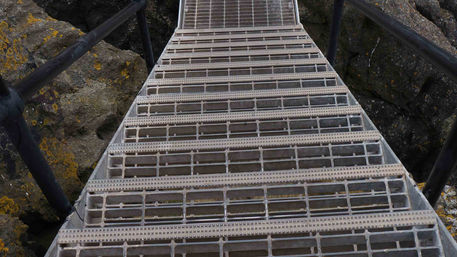Location
North Berwick, Scotland
Industry
Harbour & Coastal Infrastructure
Client
East Lothian Council
Products
Galvanised Handrail System | Open Mesh Stair Treads
North Berwick Harbour Project
Kite Group supplied galvanised handrails and open mesh stair treads at North Berwick Harbour, securing sloped walkways, staircases, and coastal paths against falls.
Project Overview
Dating back to 1150, North Berwick Harbour has a long history as a ferry port for pilgrims, a commercial hub, and later a fishing and tourism centre. Over the centuries, the harbour has been repeatedly rebuilt after storm damage and today serves mainly leisure craft, alongside the East Lothian Yacht Club and the popular Scottish Seabird Centre.
East Lothian Council required modern safety solutions for harbour walkways, ramps, and staircases to ensure secure access for staff, visitors, and technicians operating in this exposed coastal environment.
Did You Know?
The North Berwick witch trials were the first major witchcraft persecution in Scotland. In 1590, witches were accused of summoning a storm that nearly sank King James VI’s ship. Trials were held at the Auld Kirk, next to the harbour.
Kite’s Contribution
Kite Group supplied and installed a Two-Ball Standards Handrail System with Return Bends across multiple levels of the harbour:
Custom Fit: D-return bends provided smooth, safe handrail ends on sloped staircases.
Durability: Galvanised finish ensured protection against harsh coastal weather.
Stair Treads: Galvanised open mesh treads with pyramid nosing improved grip and provided anti-slip performance in wet conditions.
Safety First: Enhanced protection for maintenance teams, harbour users, and the public.
By delivering a tailored handrail and stair system, Kite helped safeguard one of Scotland’s historic harbours while maintaining its long-term accessibility and heritage value.
Project Gallery







